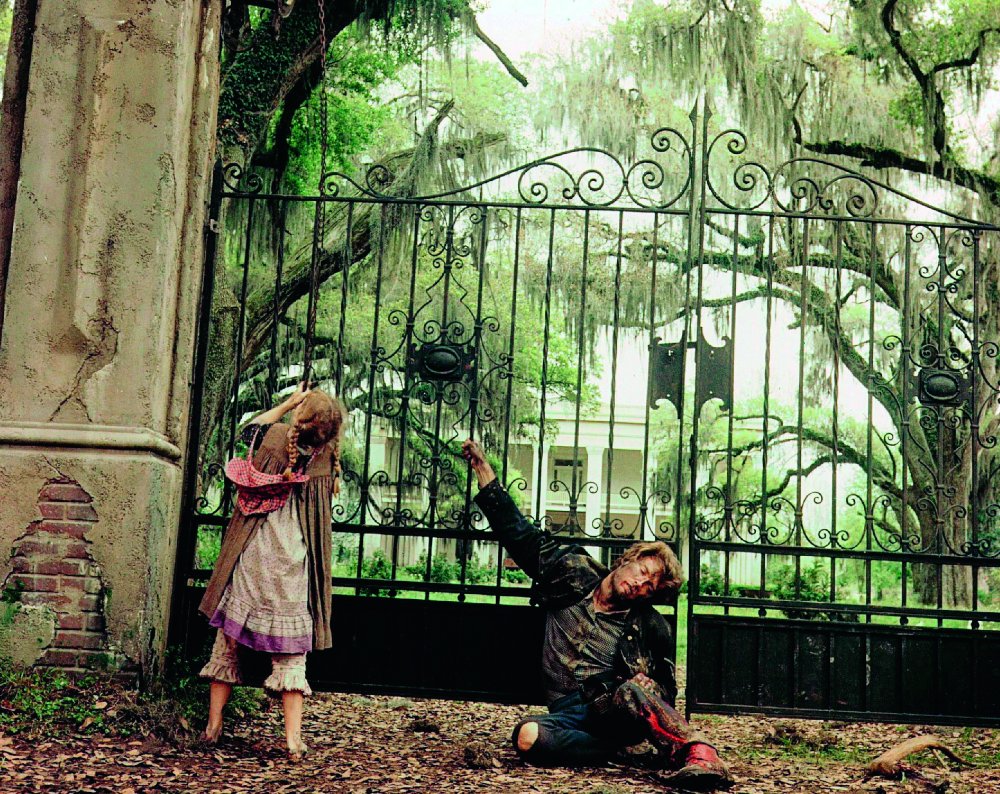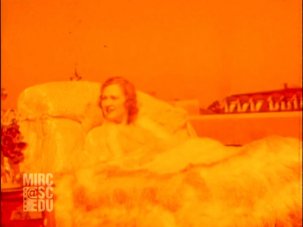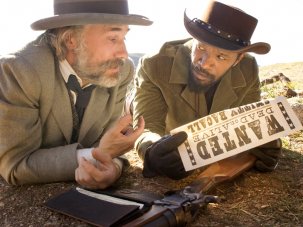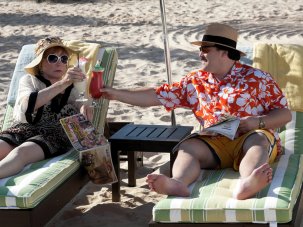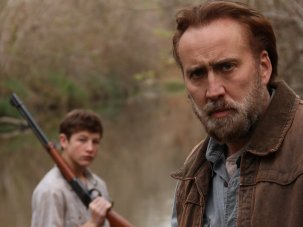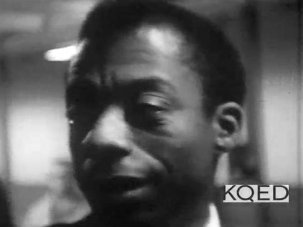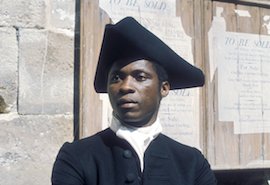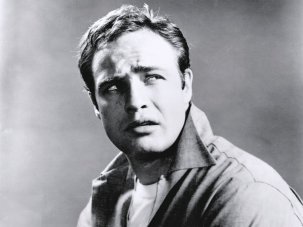Some years ago, while standing around a living room in Sumner, Mississippi, I picked up an old copy of the Oxford American magazine, whose cover posed the question: ‘Is the South Still Gothic?’

The Sight & Sound Deep Focus season Southern Gothic: Love, Death and Religion in the American Deep South runs at the BFI Southbank, London, until 31 May 2015, and includes all 12 films profiled at the end of this feature.
The residence I was standing in, as it happens, had been the boyhood home of the Memphis-based photographer William Eggleston, whose subject matter is largely quotidian, though he occasionally veers into terrain that might be described as Gothic. You can see the dining room and sitting room of this house in a number of Eggleston’s photographs from the 1960s and 70s. In those days these rooms were painted an alarming shade of green, though by the time I saw the house, decorated in the height of good taste, that bilious green had been painted over, save for a small corner where one wall met the ceiling, left as a reminder.
Sumner is one of the seats of Tallahatchie County, one county over from Lafayette, where William Faulkner was raised in Oxford and whence he took the inspiration for his fictional Yoknapatawpha County – Eggleston’s photographs of the area are collected in a volume titled Faulkner’s Mississippi. Tallahatchie County is named for the river of the same name that runs through it, which achieved a measure of fame in 1955 when the mutilated body of 14-year-old Emmett Till was recovered from its waters some 40 miles downriver from Sumner. Eggleston’s grandfather was the judge on the trial. Till, it would be revealed, had been dumped there after being savagely murdered for having the temerity to speak to a married white woman. This, too, remains as a reminder.
I am, I should say at the outset, not a Southerner but a native of Cincinnati, a city in south-west Ohio separated only by a river from Kentucky – a slave state that didn’t secede from the Union, like Maryland, but Dixie nevertheless. The river is the Ohio, which features in Charles Laughton’s 1955 The Night of the Hunter, often cited as a Southern Gothic classic, though it would more accurately be classified as Appalachian Gothic. I was raised in the North, then, but in walking distance from the South. I don’t know if this has given me any especial perspective on either, but I will attempt to do justice to both.
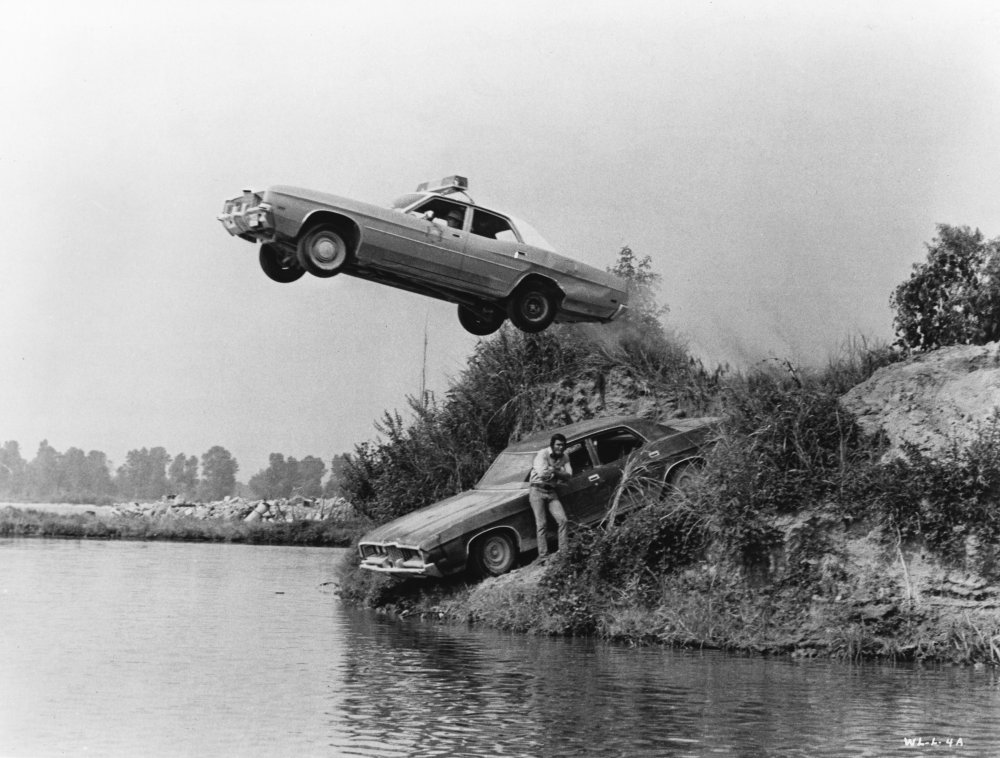
White Lightning (1973)
The American South has certainly enjoyed its share of romanticisation and idealisation – you can find Northern men of letters, such as Henry Miller (in 1945’s The Air-Conditioned Nightmare) and Edmund Wilson (in 1962’s Patriotic Gore), playing with the myth of the noble Southern ‘Lost Cause’ as a repudiation of the industrialisation that followed the Union victory. More generally, however, it has in popular culture performed the admirable function of acting as a scapegoat for the North, a means to reassure the Yankee of his own civilisation by allowing him to hold himself above his Southern cousins, forgoing addressing the prejudices of his own country by externalising and projecting them on to a convenient Other. (The United States serves this function for a great many other nations, while itself preferring to use Russia for these purposes.)
The persistent image of the South, as perpetuated in innumerable works by native sons and daughters, as well as by the carpetbaggers who flocked from the North in search of easy profits at the close of the Civil War, is as the cradle of what Greil Marcus famously dubbed the ‘Old, Weird America’. Still defined by its resistance to the meddling of the federal government – the subject of Elia Kazan’s ravishing Wild River (1960), shot in the Tennessee Valley – the South is frequently depicted as a land of independent fiefdoms in which the highest law is the local gentry, installed since time immemorial in their colonnaded plantations, and the (usually corrupt, always sweatily obese) county sheriff, a character familiar from such drive-in hits as White Lightning (1973) and Macon County Line (1974), and television’s The Dukes of Hazzard (1979-85).
White Lightning belongs to the moonshine movie subgenre, a celebration of the outlaw spirit as represented by distilling untaxed alcohol for sale and outrunning the Feds in souped-up cars – the storied origins of Nascar racing, by the way. The grandpappy of all moonshine movies is Thunder Road (1958) – a passion project for Robert Mitchum, who wrote the story, sang the theme song, and stars alongside his son James – which was shot in the mountains of Tennessee and North Carolina. (Mitchum, who also appeared in The Night of the Hunter and 1961’s Cape Fear, is sometimes taken for a Southerner, and I suppose serving time for vagrancy on a Savannah, Georgia, chain gang in his youth gives him some honorary rights, though in fact he originates from nearer to the New England of 1973’s The Friends of Eddie Coyle.)

Cape Fear (1961)
To clean these Augean stables of endemic corruption requires appropriately Herculean heroes, such as Joe Don Baker as renegade Sheriff Buford Pusser in Phil Karlson’s Walking Tall (1973) or its direct precursor Karlson’s The Phenix City Story (1955). The message is clear: “Abandon hope, ye who cross the Mason-Dixon line.” At worst the outside interloper can anticipate a noose; at best, duelling banjos and an invitation to “Squeal like a pig!”
These stereotypes wouldn’t persist without some undergirding of fact, and if you read up on, say, the State Line Mob or the Dixie Mafia of Biloxi, Mississippi, you’ll find that they weren’t to be done one better by their brethren in the north-east when it came to jaw-dropping violence – and we won’t even start on the South’s century of de jure disenfranchisement, enforced at gunpoint.
This aside, it should be said that the southland is today, as ever, a region that a great many people of all races and creeds happily and proudly call home, a place of hospitality that borders on the pathological, where, even in this hectic era, the sweetness of life has not been altogether forgotten. It is home to some of the finest artery-hardening cooking in the United States, and one of the greatest, most fecund musical traditions in the world, if exportability is any measure of greatness. This side of the South – its bon vivant side – is seen to good advantage in the rollicking, Dionysian documentaries of Les Blank, who was born in Tampa, Florida, but discovered himself in the raucous party scene of 1950s New Orleans, a city to which he frequently returned. This is not, however, the South that we are concerned with here.
“I go home often, to refresh my sense of outrage,” the Columbus, Georgia-born novelist Carson McCullers once wrote. McCullers, who’d made a splashy debut with her 1940 novel The Heart Is a Lonely Hunter, lit out for New York and Europe almost as soon as she’d cashed her first advance. This outrage, and the creeping darkness concomitant to it, is our subject. The South is old – Shakespeare’s The Tempest was inspired by a shipwreck that occurred en route to the Virginia colony, known today by the nickname ‘Old Dominion’ – and its ties to the Gothic tradition go back as far as its literature: Edgar Allan Poe, to give one example, was a son of Richmond.
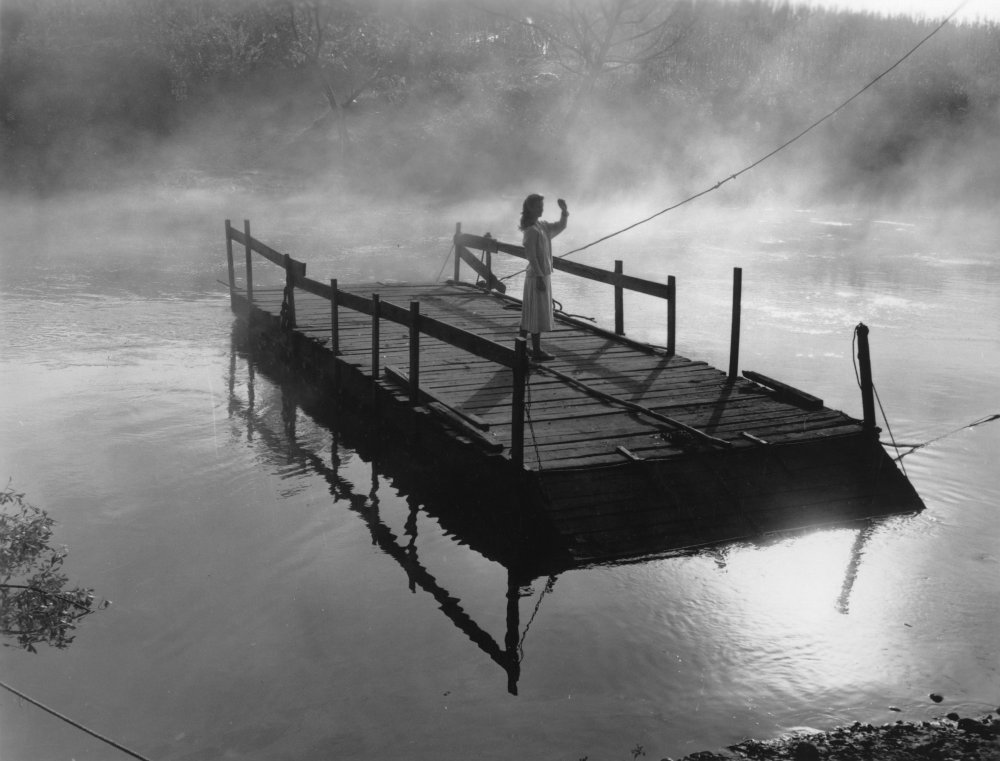
Wild River (1960)
The specific designation ‘Southern Gothic’, however, is connected to a new social criticism and a flowering of the arts in the South that began in the early 20th century, in the years immediately following the 1917 publication of H.L. Mencken’s essay The Sahara of the Bozart (a hillbilly corruption of Beaux Arts). Mencken’s sweeping and scathing essay diagnosed an utter dearth of culture in the former Confederate states, a claim repudiated almost as soon as it was made by the emergence of writers including James Branch Cabell, Thomas Wolfe, Katherine Anne Porter, McCullers and Tennessee Williams. This was a new Southern literature in stark contrast to the established tradition of ‘tall yarns’ or Joel Chandler Harris’s dialect humour.
Williams, authoring a spirited defence of McCullers’s sophomore work, Reflections in a Golden Eye, which had been criticised for its excessive grotesquerie upon its 1941 publication, ventured to describe the local “Gothic school” to which he and McCullers had been consigned: “There is something in the region, something in the blood and culture of the southern state that has somehow made them the centre of this Gothic school of writers.” Defining the unifying attribute of work in this school, which he compared to the contemporary creations of the French existentialists, Williams singled out “a sense, an intuition, of an underlying dreadfulness in modern experience”, going on to praise McCullers’s novel as “conceived in that Sense of the Awful which is the desperate black root of nearly all significant modern art, from the Guernica of Picasso to the cartoons of Charles Addams.”
As Williams reaffirms, the key figure in this renaissance of Southern literature – a renaissance roughly aligned to modernism – was Faulkner. Like most fêted authors of his day, Faulkner was courted by Hollywood straight away – his Sanctuary, infamous for addressing the taboo subject of rape, was filmed as 1933’s The Story of Temple Drake, just nudged into theatres before the Production Code Administration (PCA) pulled down the shutters on all things illicit, simultaneously discouraging any depiction of “Miscegenation (sex relationships between the white and black races)” and “Willful offense to any nation, race or creed”. In practical terms, this meant a segregation of black and white subjects, and a denial, lest offence be given, that there was anything like a race issue in America.
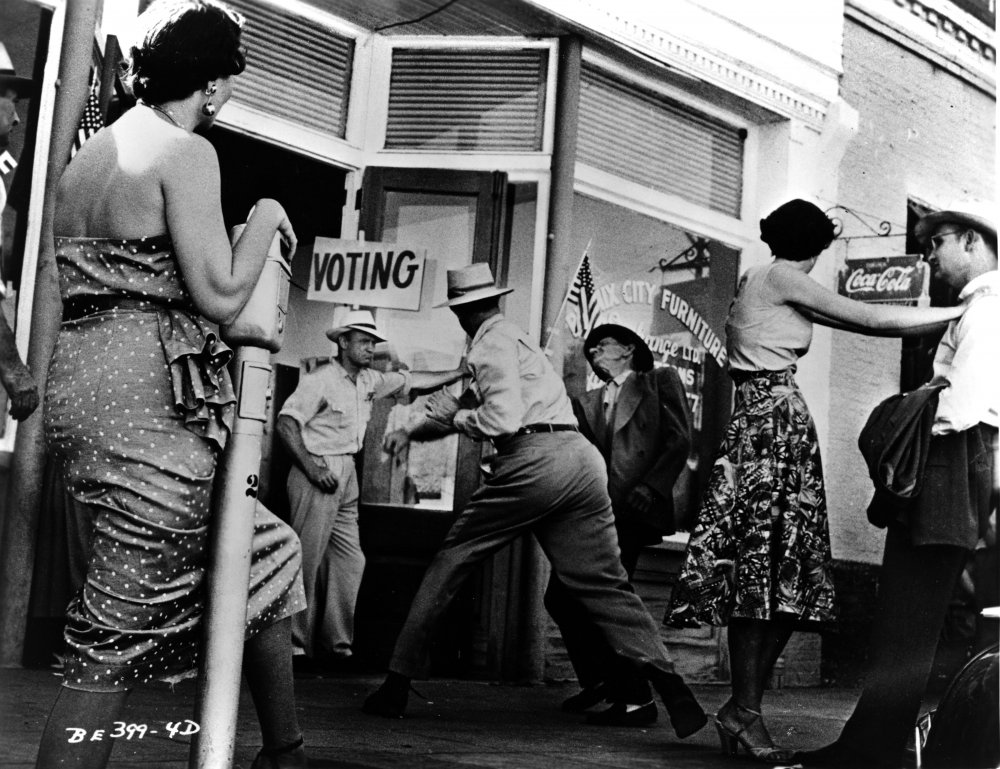
The Phenix City Story (1955)
Henceforth, if a film were to address the issue of lynch law – still taking lives both white and (disproportionately) black and, after 1930, doing so exclusively in the South – it would have to steer clear of the race issue, as in Fritz Lang’s Fury (1936), which had consummate everyman Spencer Tracy as a victim of vigilantism. This PCA edict was challenged by a handful of postwar social problem films, a category to which Clarence Brown’s 1949 adaptation of Faulkner’s Intruder in the Dust firmly belongs. The film’s screenplay was written by Ben Maddow, who shortly thereafter would land on the Hollywood blacklist – another of the periodic retractions of freedom of speech that mark studio-era American movies – and it was not until the PCA and blacklist both began to lose their authority that the spectre of the rude ‘justice’ of the lynch mob, usually riled up by wrongful accusation, would return to the screen in such films as To Kill a Mockingbird (1962) and The Chase (1965). Texan Horton Foote wrote the screenplay for the first, while the second was based on Foote’s 1956 play-become-novel of the same name.
It was yet another Southern playwright who, though unimpeachably innocent of commie affiliation, would most keep the guardians of cinematic morality on their toes through the Eisenhower years. This was Tennessee Williams, the son of a dilapidated Southern belle and a philandering salesman, for whom the family dysfunction, sexual repression and fabulous, galloping hysteria of his native land were so much biscuits and gravy. Along with the Kinsey Reports and the aural miscegenation represented by rock ’n’ roll – an almost exclusively Southern phenomenon – Williams’s work, particularly the ‘event’ films made from his plays, were vital tools in the dismantling of American propriety.
Of the change-averse South, it is often said that its history is a persistent presence in the current day – as Faulkner put it, “The past is never dead. It’s not even past.” This must apply doubly to the defining event of the South’s history, the Civil War – and though the marks of the war are found all over the American western, the ‘curious institution’ that necessitated that war, slavery, is curiously absent from Hollywood product. At midcentury, when the cinema was in its high sword-and-sandals stage, one could find significantly more references to Roman and Egyptian bondsmen than to the men and women who had served King Cotton. (See, for example, Howard Hawks’s 1955 Land of the Pharaohs, co-scripted by Faulkner, who wrote dialogue for Jack Hawkins’s Pharaoh Khufu in the orotund voice of “a Kentucky colonel”.) The Pre-Code period was not much better – offhand, the most harrowing exception I can think of is the solemn depiction of slave boats trafficking Africans to America that opens D.W. Griffith’s Abraham Lincoln (1930). This was a glaring absence that would not be redressed until the 1970s, the decade of TV miniseries Roots (1977) and, love it or hate it, Richard Fleischer’s Mandingo (1975).
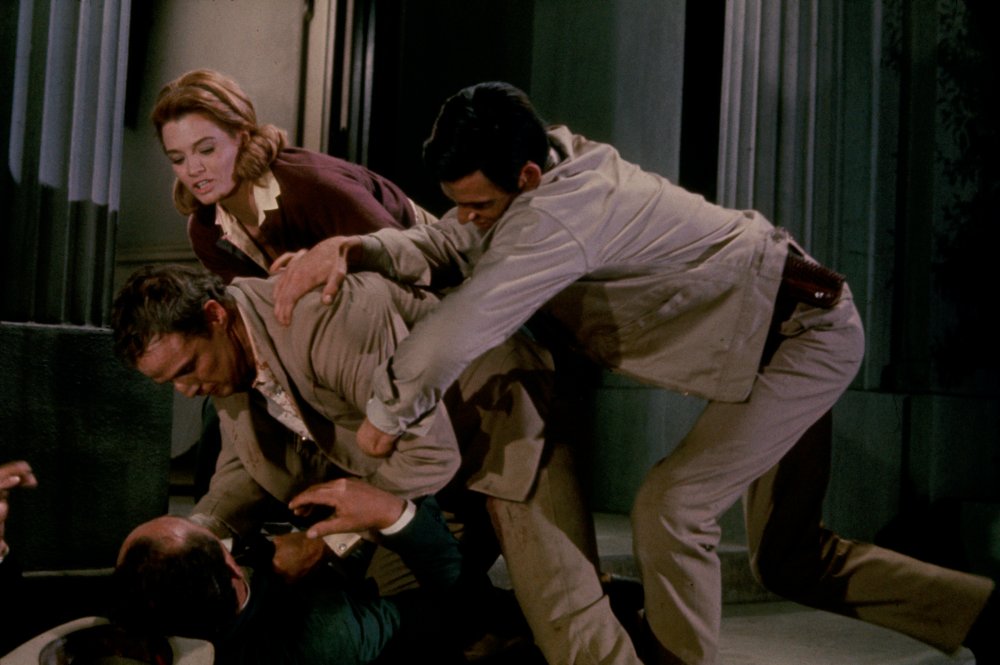
The Chase (1965)
Newly permissible subject matter wasn’t the only change in filmed depictions of the South. Though a great many movies of the studio era were made from the writing of native-born Southerners, one and all of these were directed by outsiders – and most of them acted by them as well. In fact, aside from Griffith, whose father was Confederate officer ‘Roaring Jake’ Griffith, one can count on the fingers of a single hand the notable figures of studio-era Hollywood – that is to say, those who warrant an entry in Sarris’s The American Cinema in 1968 – born in the South. (For the record, these are Texan King Vidor, a survivor of the Galveston Hurricane of 1900; and Stanley Donen, whose family belonged to what can’t have been a particularly large Jewish community in Columbia, South Carolina.)
This dearth of Southern auteurs may be attributed to an inborn parochialism that prevented most natives of the region from straying as far as the next county, let alone Hollywood – here we may recall the famous story of Faulkner innocuously asking his boss at MGM, Louis B. Mayer, if he could “work from home”, and next being heard from 1,900 miles away, back in Oxford. It is also undoubtedly pertinent that, even 100 years after the devastation of the Civil War, the South was still far, far behind the rest of the country by any economic standard and, in this naturally backwards-looking region, most of the creatively inclined natives dedicated themselves to 19th-century belletrist pursuits rather than the distinctly 20th-century business of moving pictures.
It was only with the death rattle of the studio system as classically constituted and the decentralisation of the American film industry, then, that indigenous entrepreneurial talents began to assert themselves, many working in the vein of so-called exploitation cinema, which preceded and predicted the regional independent filmmaking boom to come. Exploitation had deep roots in the South, with its freak show/ medicine show traditions, and this produced such colourful figures as Texan schlockmeister Larry Buchanan and Alabama-born producer David F. Friedman, whose partnership with Herschell Gordon Lewis produced 1964 the-South-will-rise-again splatterfest Two Thousand Maniacs!
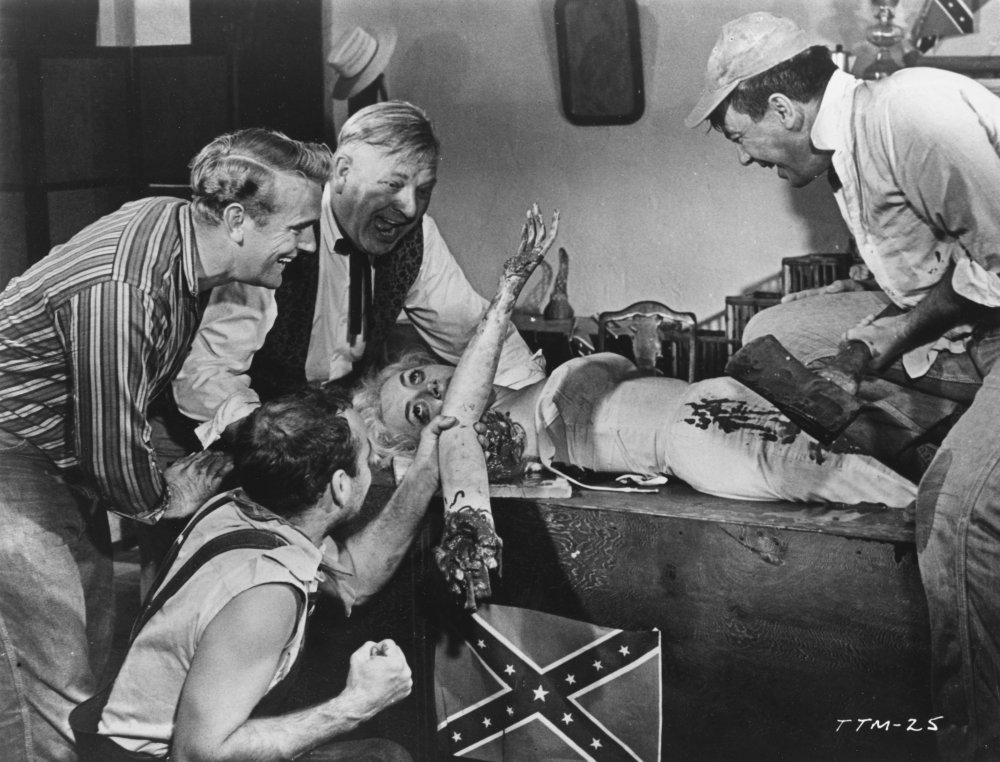
Two Thousand Maniacs (1964)
In the years to come, a bumper crop of native talents would appear to keep the local drive-ins serviced, including Charles B. Pierce of Texarkana (1972’s The Legend of Boggy Creek, 1976’s The Town that Dreaded Sundown), William Girdler of Louisville, Kentucky (Abby, 1974’s Blaxploitation answer to The Exorcist), and Austin’s Tobe Hooper, whose independently produced The Texas Chain Saw Massacre (1974) was a box-office success of heretofore unheard-of proportions. Hooper took his inspiration for Massacre from the case of Wisconsin’s Ed Gein, but shopped local for his follow-up crowd displeaser, Eaten Alive (aka Death Trap), which draws on the legend of Joe Ball, a folkloric figure who lived outside San Antonio in the 1930s and is believed to have murdered an untold number of women and fed their bodies to his pet alligators. (Returning to the question ‘Is the South still Gothic?’: a few years ago I visited an alligator farm in Collin County, Texas, where gators were raised for boots and accessories, and the drugged-up proprietor might very well have been Joe Ball reincarnate.)
All of this was many years before the words ‘South by Southwest’ or ‘Richard Linklater’ had entered the vernacular, though the table was already set for a groundswell of regionalised independent filmmaking, in the South as elsewhere in the States. Eagle Pennell, a friend of Hooper’s who watched and learned on the set of Massacre, shortly thereafter produced a shaggy-dog comedy called The Whole Shootin’ Match (1978) and, in the years to follow, there would be a decided uptick in the appearance of Southern stories told by honest-to-God Southerners, with actor-directors Robert Duvall and Billy Bob Thornton scoring conspicuous successes in the late 90s.
Perhaps the defining figure of indigenous Southern cinema in the 21st century thus far has been Arkansas-born David Gordon Green, whose 2000 debut George Washington synthesised the influences of Texan/Oklahoman Terrence Malick, Los Angelean-by-way-of-Mississippi Charles Burnett and, yes, the eponymous Virginian. In films like Thornton’s Sling Blade (1996), Duvall’s The Apostle (1997), Green’s Undertow (2004) and Joe (2013), and Linklater’s Bernie (2011), as well as in Louisiana-born Nic Pizzolatto’s TV series True Detective (2014), the “underlying dreadfulness” described by Williams appears to be alive and unwell.
Here, for good and ill, the words written by Hank Williams Jr in 1977 are apt: “The New South, thank God, is still the same.”
The 12 films below play in the Southern Gothic: Love, Death and Religion in the American Deep South season at BFI Southbank, London, throughout May 2015.
1. Intruder in the Dust
Clarence Brown, 1949
Lucas Beauchamp (Juano Hernández) is a proud, land-owning black farmer who refuses to bow and scrape before the whites in town, and when he’s accused of shooting a local peckerwood in the back, the mob that gathers outside the courthouse can’t wait to get their hands on him.
In some areas the well-intentioned progressivism of Intruder in the Dust seems positively retrograde, and the script by Ben Maddow was criticised for its white-saviour narrative by communist intellectual V.J. Jerome in his 1950 essay The Negro in Hollywood Films. Nevertheless Intruder in the Dust, much of which was filmed on location in Oxford, is remarkable for its evocation of the gay, festival atmosphere that often preceded a lynching, and for Hernández’s imperious screen presence.
2. The Young One
Luis Buñuel, 1960
Like Intruder in the Dust and To Kill a Mockingbird, Luis Buñuel’s The Young One – which appeared the same year as Harper Lee’s book, sometimes with the title White Trash – also hinges on an accused black man trying to keep out of a kangaroo court. A jazz clarinettist, Traver (Bernie Hamilton), washes up on an island hunting preserve off the Carolina coast after fleeing the city in a dinghy just ahead of cries of “Rape”. Here he runs afoul of a racist game warden (Zachary Scott) who’s all the more leery of his visitor because he’s courting the barely teenaged daughter (Key Meersman) of a newly deceased neighbour.
In addressing a traditional Southern tendency to marry very young – which in the case of good ol’ boy Jerry Lee Lewis, who’d tied the knot with his 13-year-old cousin, had recently shocked America – The Young One goes considerably further than Kubrick’s Lolita would. This fact tends to overshadow another shocking aspect of the film – that it never sees fit to clear up the matter of whether or not Traver is actually guilty of the crime he’s been accused of.
While most movies about the South from this period were directed by men born outside it, few came from as far outside as Don Buñuel of Aragón, and this allowed him to transcend the binary between liberal piety and reactionary racism that tended to define issue-driven Hollywood movies. The men depicted by Hamilton and Scott are neither monsters nor paragons of pride and virtue, and in this there is something truly revolutionary.
3. The Fugitive Kind
Sidney Lumet, 1960
Marlon Brando defined the role of Stanley Kowalski in the 1947-49 stage run of Tennessee Williams’s A Streetcar Named Desire, and his bull physique squeezed into a white T-shirt for Elia Kazan’s 1951 film was perhaps the most iconic image of his screen career. This was not, precisely, to be eclipsed by the snakeskin jacket that he wears in his first and only ‘reunion’ with Williams in Sidney Lumet’s The Fugitive Kind, an adaptation of Williams’s 1957 Orpheus Descending.
Brando plays Val Xavier – like Traver in The Young One, a musician on the run – who arrives in a small somnolescent town and acts as a force of erotic disruption, as Mr Presley and his ilk had done shortly before for the nation as a whole. The film features standout work from Georgia native Joanne Woodward as slatternly dipso Carol Cutrere and, as a hate-sick soon-to-be-widow, Anna Magnani, in her only screen pairing with fellow force of nature Brando.
4. To Kill a Mockingbird
Robert Mulligan, 1962
After Harper Lee’s novel sold six million copies and won the Pulitzer Prize, achieving the status of a genuine pop phenomenon, it was an inevitability that it would head to Hollywood, though no one could’ve guessed on the consummate excellence of the film adaptation that would appear. Set in Lee’s native Alabama in the 1930s – exteriors were shot in her hometown of Monroeville – the film concerns the attempt by lawyer Atticus Finch (Gregory Peck) to defend Tom Robinson (Brock Peters), a black man accused of rape by a no-account white girl, and is beautifully handled by the director Robert Mulligan who, though Bronx-born, showed an unusual lyrical sensitivity to the rhythms and textures of Southern life in films including Baby the Rain Must Fall (1964, also written by Horton Foote) and The Man in the Moon (1991).
Three weeks after Mockingbird’s Christmas premiere at the Fox Wilshire Theatre in Los Angeles, George Wallace, making his first speech as governor of Alabama, pledged, “Segregation now, segregation tomorrow, and segregation forever.”
5. Hush… Hush, Sweet Charlotte
Robert Aldrich, 1964
Tennessee Williams didn’t write a word of Hush… Hush, Sweet Charlotte, but Robert Aldrich’s follow-up to his smash What Ever Happened to Baby Jane? (1962) contains a number of elements that suggest the playwright’s influence: the potentate father figure whose image looms large in the imagination of his daughter, the dangerous desperation of gentry gone to seed, and the terrible persistence of suppressed trauma. Baby Jane? star Bette Davis, often mistaken for a Southerner due to her role in Jezebel (1938), appears opposite Olivia de Havilland, the Gone with the Wind (1939) good-girl-gone-bad, who teams with Richmond-born Joe Cotten to persecute Davis’s decayed debutante with the memory of a gruesome murder that occurred one awful night in 1927.
6. Reflections in a Golden Eye
John Huston, 1967
There had been tentative attempts to adapt Carson McCullers for the screen before, with mediocre results, but the Production Code Administration had to crumble before her oeuvre, steeped as it is in stifled and inchoate sexual yearning, could be done any justice. The downfall of the PCA also reinvigorated director John Huston, whose connection to American literature was profound, and who directed the finest adaptation of McCullers’s work to date.
Huston’s Reflections in a Golden Eye, a knot of forbidden appetites and misplaced affection set on a Southern army base, boasts affecting performances from Elizabeth Taylor, Julie Harris, Brian Keith and Marlon Brando, whose ramrod-straight (and slightly queer) Major Weldon Penderton, seen smearing himself with cold cream, fumbling with dumbbells and vainly rehearsing normalcy in the mirror, is a sad ogre. To emphasise the film’s jaundiced atmosphere, Huston had the original release prints desaturated in post-production, giving DP Aldo Tonti’s work a golden burnish.
McCullers, whose creative career had effectively ended a decade before due to a series of strokes and personal traumas, died two weeks after the film’s premiere.
7. The Beguiled
Don Siegel, 1971
A psychological thriller with a vice-like grip set during the closing days of the Civil War, The Beguiled, based on a novel by Thomas P. Cullinan, appeared at the beginning of a remarkable creative run for director Don Siegel that included Dirty Harry (1971) and Charley Varrick (1973).
Shot in the Greek Revival Ashland-Belle Helene Plantation in Louisiana, an actual ante-bellum relic draped in Spanish moss and melancholy history, Siegel’s erotic fairytale follows wounded Union soldier John McBurney (Clint Eastwood) as he seeks sanctuary among the loyal Confederate women who remain at a boarding school for young girls, including headmistress Geraldine Page and virginal instructor Elizabeth Hartman, whose performance fairly palpitates with fluttering feeling. Briefly asserting his rooster-in-the-henhouse domain, McBurney soon discovers that war between the states is nothing to war between the sexes.
8. Mandingo
Richard Fleischer, 1975
Despite being one of only a handful of films to directly address the historical legacy of slavery, Mandingo has been dismissed as rank slavesploitation à la The Legend of Nigger Charley (1972), or belittled as shocking camp because it happens to feature a jaw-dropping scene of a plummy James Mason, playing the master of the Falconhurst plantation, using a black boy as a footstool to cure his rheumatism.
None of this, however, diminishes the considerable visceral power of the film’s exploration of the economy of desire behind the trade in flesh, augmented by director Richard Fleischer’s masterful mise en scène. Hammond (Perry King), heir to Falconhurst, disdains his new wife, Blanche (Susan George) for the caresses of his black “bed wench”, Ellen (Brenda Sykes), so Blanche turns her affections to slave Ganymede (Ken Norton), bred as a prizefighter, setting the stage for a last reel worthy of a Jacobean revenge tragedy. Roger Ebert called it “racist trash, obscene in its manipulation of human beings and feelings”, while its champions (correct, as it happens) include Robin Wood, Elliott Stein and Dave Kehr, who called it “Fleischer’s last great crime film, in which the role of the faceless killer is played by an entire social system.”
9. Wise Blood
John Huston, 1979
Twelve years after Reflections in a Golden Eye, Huston returned to Southern Gothic themes with his adaptation of Wise Blood, a 1952 novel by another lion of Southern fiction, Flannery O’Connor. Macon, Georgia, fills in for O’Connor’s ‘Taulkinham’, where young veteran Hazel ‘Haze’ Motes (Brad Dourif) lands after returning from war abroad and, preaching atheism from street corners, creates his Holy Church of Truth Without Christ. Motes, though he tries to shed his religious upbringing, cannot be rid of his proselytising nature and minister’s mien, any more than O’Connor could escape the mark left on her work by having been raised a Catholic in the majority-Protestant South.
Bringing together the cream of Dixie’s character actors (Harry Dean Stanton, Ned Beatty), Huston nails O’Connor’s deadpan comic tone and produces a rollicking monkeyshine that addresses the Southern tradition of ballyhoo, from the medicine show to the evangelical extortionist to the matinee promotional.
10. Sling Blade
Billy Bob Thornton, 1996
Sling Blade’s writer-director Billy Bob Thornton also plays Karl Childers in the film, a man of uncertain mental capacities who has recently been released from a state institution after 17 years. It was a slow-burn, character-based hit of the sort which is practically unimaginable today, and Thornton’s distinctive performance – the hiked-up pants, the grinding-gears voice – was naturally singled out on release. But just as remarkable are the character sketches by John Ritter and Dwight Yoakam playing, respectively, a gay man living with necessary discretion in a small Southern town and a mean drunk whose tirades are at times hysterically inappropriate.
It’s worth noting that Ritter’s father, Tex, was a famous country-and-western singer, while Yoakam was one of the greatest country success stories of the 1980s – and musician Thornton’s film reflects the Gothic tradition as it manifests itself in country songwriting.
11. The Apostle
Robert Duvall, 1997
Robert Duvall had taken a small but piquant role in Sling Blade, playing Childers’s estranged father, and in turn Thornton appears in The Apostle as an angry apostate who sets himself in opposition to Duvall’s lead character, Sonny, and his freely integrated church.
Though born in southern California, self-described “Navy brat” Duvall comes from one of those Southern families who’ve been the backbone of the American military since the days of Washington. (In fact, he is a distant relation of General Robert E. Lee, commander of the Confederate Army of Northern Virginia.) Duvall, who’d made his film debut as the recluse ‘Boo’ Radley in Mulligan’s To Kill a Mockingbird, played the lead in Faulkner adaptation Tomorrow in 1972, and made his directorial debut with a documentary about rodeo folk, produced his ultimate passion project in 1997: the character study The Apostle, in which he stars as messianic Pentecostal preacher E.F. ‘Sonny’ Dewey. Exiled from his flock in the suburbs of Dallas and on the run from the law after a not-very-preacher-like fit of wrath in which he beats his wife’s lover with a baseball bat, ‘Sonny’ skedaddles to the heart of Cajun Louisiana, building a new church and congregation from scratch.
Featuring a cast filled out with charismatic, unaffected non-professionals, Duvall’s film is a veritable aural tapestry of indigenous sounds, from documentary dialect to gospel shouters.
12. Shotgun Stories
Jeff Nichols, 2007
Another son of Arkansas, like Billy Bob Thornton, Jeff Nichols is a graduate of the University of North Carolina School of the Arts, also the Alma Mater of David Gordon Green, who established himself as a specialist in Southern regional subjects. Green produced Nichols’s debut Shotgun Stories, which follows three brothers, Son, Boy and Kid (Michael Shannon, Douglas Ligon, Barlow Jacobs, respectively), who become involved in a feud with the second family of their recently deceased father.
Engaging at once with a recognisably lived-in blue-collar reality and a Southern mythology drawn from Faulkner’s Snopes trilogy and the Grangerfords and the Shepherdsons of Twain’s The Adventures of Huckleberry Finn, Nichols’s film has gradually been recognised as the auspicious opening of a noteworthy career. Shannon had already established himself in the early plays of Oklahoman Tracy Letts, works indebted to the Southern Gothic tradition, two of which have been magnificently adapted by William Friedkin (2006’s Bug and 2011’s Killer Joe).
-
Sight & Sound: the May 2015 issue

Born on the bayou – the gothic cinema of the American Deep South, plus The Falling, A Pigeon Sat on a Branch Reflecting on Existence, Jauja, Force...
-
The Digital Edition and Archive quick link
Log in here to your digital edition and archive subscription, take a look at the packages on offer and buy a subscription.




